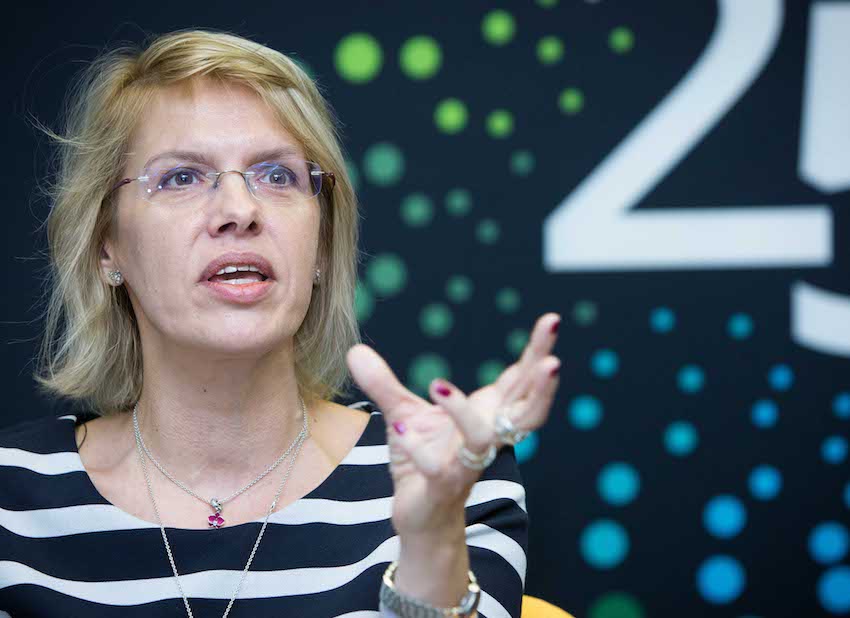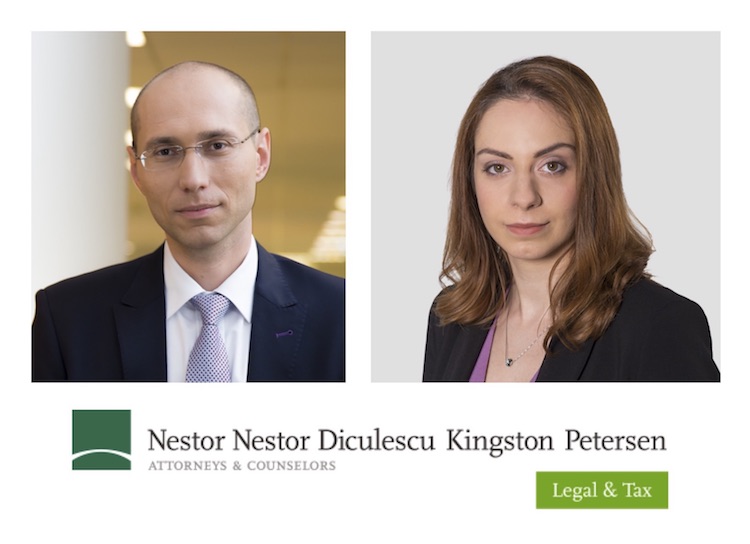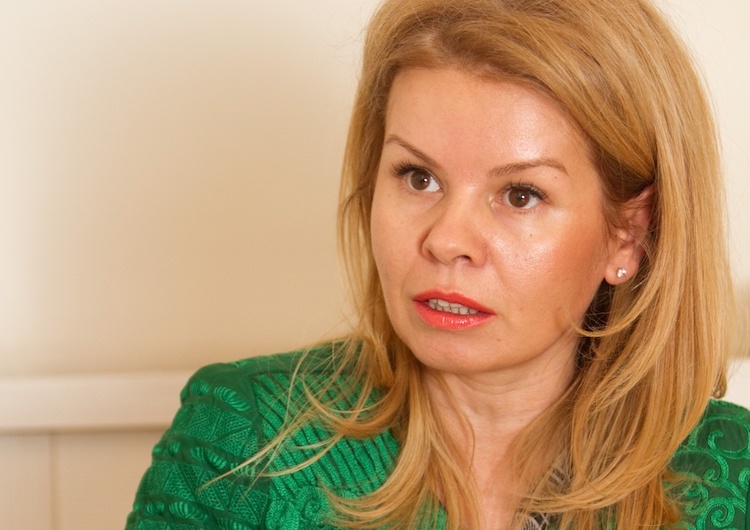Energy: The light at the end of the tunnel seems farther

Developments in Romania’s energy industry generally accounted for developments in the green energy sector in recent years, a business sector that was like a mirage in a desert that has not got over the nightmare of the economic crisis. But since every good thing comes to an end, the El Dorado the green energy turned into proved to have been only gold plated and rust started to emerge starting last summer.
Romania had one of the most generous and profitable support-schemes for renewable energy generation, acting as a magnet for investors seeking easy earnings, who saw in Romania an opportunity for rapid gain.
This subsidy-scheme was found unsustainable and, as a result, authorities armed with a very sharp needle broke the soap bubble enclosing the renewable energy industry.
The Emergency Ordinance no. 57/2013 passed last June and deferring a quota of green certificates until 2017 and 2018, respectively, forerun the decision of cutting off subsidies which came into force in 2014.
Besides the impact of the reduced support-scheme, the market was also affected by the shortcomings of the legislative system: its lack of clarity, predictability, the inconsistency of Romanian authorities.
 “There’s a lot of investors’ frustration because, in this particular area, significant and frequent changes to the law were passed over the last years, and this has really undermined investors’ confidence in this particular sector”, says Bryan Jardine, Managing Partner of Wolf Theiss.
“There’s a lot of investors’ frustration because, in this particular area, significant and frequent changes to the law were passed over the last years, and this has really undermined investors’ confidence in this particular sector”, says Bryan Jardine, Managing Partner of Wolf Theiss.
Waters are calmer in the green energy field these days, after the beginning of the year was filled with fog generated by the incoherence in the legislative process through the misfit between the provisions of the EOG no. 57/2013 and those of the corresponding law approving the ordinance: the ordinance issued last summer failed to mention that under its provision were only projects authorized by the end of 2013, so the delay in promulgating the law by President Traian Basescu caused even more concerns to new producers as the temporary reduction of the quota of GCs coincided with the reduced support-scheme enforced at the beginning of the year.
Things have gone on a normal path this spring, at least in what short-term predictability is concerned. The law took effect and, furthermore, Romania’s Energy Regulatory Authority (ANRE) announced that there is no risk of overcompensation in 2015 with respect to green certificates.
Although the amendments to the Law no. 220/2008 which established smaller subsidies for green energy producers have a visible impact on the market, braking its accelerated development, it seems that there is life after the last wave of speculative investments.
“The changes to the renewable energy support scheme have, of course, had a negative impact on certain projects and the overall attractiveness of RES investments in Romania. Nevertheless, their impact should not be overstated”, says Gabriela Cacerea, Partner of NNDKP.
In fact, Romania’s attractiveness as a destination for renewable energy investment has improved, according to EY’s quarterly index (RECAI) released in June 2014. Romania is the 31st among 40 countries, climbing one position for the second time in a row, after the similar report published in February 2014 ranked Romania the 32nd.
The common issue in the market, undermining its potential for future expansion, namely the frequent legislative changes, is also spotted by representatives of EY:“The continuous amendments to the existing legislation are still an impediment to Romania as regards the relaxation of investment in the renewable energy market”.
Investors’ appetite for renewable energy deployment was definitely reduced, says Irina Moinescu, Partner of Tuca Zbarcea & Asociatii: “Whilst the projects initiated before the legislative changes came into force are continued, no significant new investments are currently made in the renewable energy field”.
Interest has not completely disappeared, though. Emil Calota, Vicepresident of ANRE, anticipates a 55 percent increase in terms of power capacity installed in green energy projects, expecting power generation facilities of about 2500 MW to be commissioned in 2014-2015. However, these projects were mostly initiated before these changes.
Additionally, there is the funding aspect, as banks, aside from the general cautiousness with respect to lending, show an even greater reluctance to provide financing to green energy projects
“Banks have stopped financing for now, waiting for a clarification of the related legislation. In any case, the financing plans should be reviewed as the business plans were built based on a certain support provided by the State. As far as we know, banks no longer provide funds for such projects at this point, or if they do, funds are released much harder”, says Ioana Racoti, Senior Partner of Zamfirescu Racoti & Partners.
Besides difficulties in accessing loans, the new tax on “special constructions” or higher connection fees have not helped developers either, some of whom saw themselves forced to abandon their projects, as Mircea Jinga, Partner at SCA Jinga & Asociatii points out: “The reluctance of banks to provide financing to projects which have become unbankable overnight, as well as the introduction of the tax on special constructions, or, in case of new projects, the increase of connection fees led to the abandonment of many projects in early stages of development”.
While there is a sort of “wait and see” approach among investors mainly regarding the development of new projects because they are concerned about how the legislative changes will impact the business models, believes Bryan Jardine, the situation is quite different when it comes to operational projects. The industry is adapting to current market conditions, moving focus towards projects which were commissioned before the enforcement of the amended law.
“We are witnessing an interesting phenomenon in this sector. Not only there is interest for acquisitions, but financing is also available”, says Gelu Maravela, Managing Partner of Maravela & Asociatii.
Yet, it is difficult to match expectations of sellers and buyers, according to her: “Those who want to sell have certain expectations as regards the price, which are in fact natural as they incurred certain costs in the development stage, benefiting from a certain support-scheme for green certificates, while those willing to buy are looking at the potential acquisition considering the current costs and the new subsidies scheme”.
Development in the green energy industry mostly targeted wind and solar projects, where subsidies were very attractive to investors, particularly in the area of photovoltaics, considering the investment costs. Hydro energy, as well as biomass sectors have been of little interest, although they are more sustainable energy sources, having huge growth potential. However, they are promising as regards the further development. While business in solar and wind energy sectors will be focused on acquisitions, the hydropower and biomass market, little or not at all affected by the reduction of subsidies, is expected to see new projects established.
 “Investors’ interest began to turn to small biomass an biogas projects, as well as to ‘rooftop’ solar projects which could get long-term contracts at regulated prices provided the much-expected ‘feed-in tariff’ is implemented”, says Mircea Jinga, Partner at SCA Jinga & Asociatii.
“Investors’ interest began to turn to small biomass an biogas projects, as well as to ‘rooftop’ solar projects which could get long-term contracts at regulated prices provided the much-expected ‘feed-in tariff’ is implemented”, says Mircea Jinga, Partner at SCA Jinga & Asociatii.
The feed-in tariff for power plants smaller than 1 MW, and 2 MW, respectively, for cogeneration projects, could fuel, indeed, the expansion on the market; however, outlooks are not very favorable and this alternative to the GCs support-scheme could be introduced only in late-2014, in the best case scenario.
Hydropower energy, specifically projects for energy produced in small hydropower plants are in the spotlight this year, according to other specialists on the market who say that investors’ appetite for hydropower energy produced by SHPs, which are more certain and profitable than wind and solar parks, has returned.
A less dynamic market in terms of new investment or acquisitions of operational projects translates into a smaller amount of legal work for law firms in Romania.
“Although the renewable energy projects are no longer the hottest item on our lawyers’ agenda, there is still activity generated by the clients who have already invested in the field”, says Irina Moinescu, Partner of Tuca Zbarcea & Asociatii.
“There is still healthy activity on this market and continued interest in wind and photovoltaic projects in particular. Samsung recently acquired a 45MW photovoltaic project in Southern Romania”, confirms Cristiana I. Stoica, Founding Partner of Stoica & Asociatii.
The sector which has kept law firms very busy over the past years seems quite dusty, though, at least with respect to large deals. The conventional energy sector is expected to be, therefore, “responsible” for such deals.
“As far as large deals are concerned, by the end of this year the deal regarding reactors 3 and 4 of Cernavoda may be concluded. With an estimated value of over €6 billion, it would undoubtedly be the largest deal of the year. Further sizeable transactions may be concluded in case another round of tenders for oil & gas concessions is organized”, according to Gabriela Cacerea, Partner of NNDKP.
Tuca Zbarcea & Asociatii is advising an international investor on the development and operation of Units 3 and 4 at Cernavoda nuclear power plant, following investments valued at approximately $4 million, says Irina Moinescu who names another high profile project possibly bringing one of the largest deals of the year - an investment of approximately €500 million in two power plants based on gas. “On a further note, I believe that projects on energy efficiency shall play a greater role in terms of legal work in the upcoming period”, she adds.
Conventional Energy
In the shadow of green energy developments, conventional energy has seen little activity in the past years, as major investments are yet to be seen, in spite of having an essential importance in the proper functioning of the domestic energy sector.
“As important as renewables are, they are just an arrow in the overall energy quiver. You have to look at the base load, you’re still going to need coal or gas. You need to have a basket of energy sources available, for those times when the wind isn’t blowing, or the sun isn’t shining”, says Bryan Jardine, Mananging Partner of Wolf Theiss.
The development of the Units 3 and 4 at Cernavoda, along with the Rovinari power plant and the hydropower station at Tarnita-Lapustesti are the major topics on the Government’s agenda as regards conventional energy. However, only the first two seem to be close to materialization. Both Deputy Prime Minister Liviu Dragnea and Constantin Nita, the Minister of Economy asserted that at least one of these two, namely the Rovinari project, will start this fall, estimating a close deadline for the Cernavoda project, too, following talks with Chinese investors interested to support these developments.
 “In terms of conventional energy activity, I believe we are dealing with a lot of negative image created by the shale gas exploitation projects, some investors being put off due to the negative public image of these projects”, says Laurentiu Pachiu, Managing Partner and Founder of Pachiu & Associates.
“In terms of conventional energy activity, I believe we are dealing with a lot of negative image created by the shale gas exploitation projects, some investors being put off due to the negative public image of these projects”, says Laurentiu Pachiu, Managing Partner and Founder of Pachiu & Associates.
The shale gas exploration works run by Chevron in the Vaslui County caused major controversy which lead to some protests in the area and a general negative opinion about this energy segment.
“We have to take into account that these investors are very sophisticated and due to the huge amounts of investments required for such exploitations for shale gas or for marine platforms they are very risk adverse, therefore the predictability factor is crucial in this sector”, he adds.
A similar issue, although of a bigger amplitude, happened with the overly-debated Rosia Montana mining project belonging to RMGC, which was the hot topic last fall. Following protests and demonstrations for many weeks, authorities stepped back and did not approve the start of mining in the area: another black ball for Romania’s credibility as a mature and predictable business environment.
Hence, the privatizations of the state-owned companies in the energy business remain the only notable projects in this industry. The initial public offerings of Nuclearelectrica and Romgaz in the second half of 2013, and Electrica, in June 2014, starred the domestic energy market, attracting aggregated investment of nearly lei 3.9 billion.
“To countervail the declining interest in green energy, the State is seeking, through the dual listing of Electrica Furnizare, to attract further foreign capital in the market. Valued by investors and successfully applied in connection with Transelectrica recently, corporate bond issuance by state-owned companies in the energy sector is another point of interest to investors”, says Mircea Jinga, Partner of SCA Jinga & Asociatii.
This article appeared in the 2014 edition of Which Lawyer in Romania






